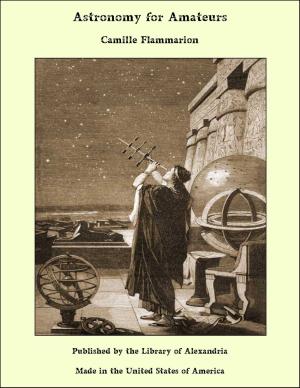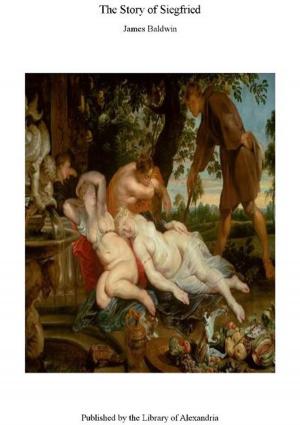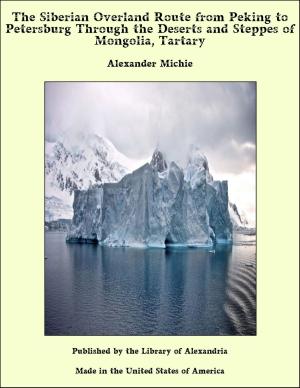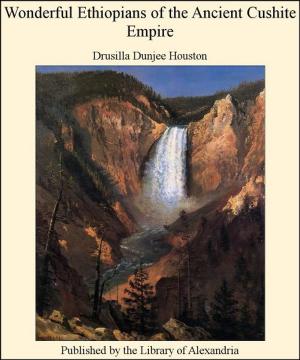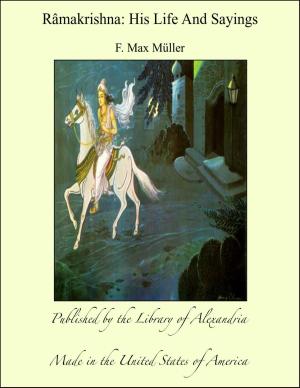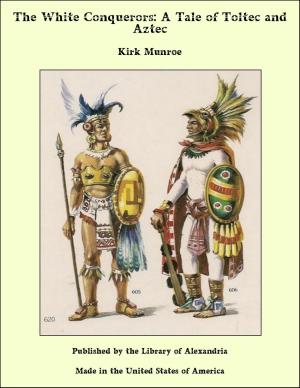| Author: | Arthur Lloyd | ISBN: | 9781465536280 |
| Publisher: | Library of Alexandria | Publication: | March 8, 2015 |
| Imprint: | Language: | English |
| Author: | Arthur Lloyd |
| ISBN: | 9781465536280 |
| Publisher: | Library of Alexandria |
| Publication: | March 8, 2015 |
| Imprint: | |
| Language: | English |
It is my intention in these lectures to sketch, for my own benefit, as well as for that of my Readers, the history and doctrine of the Shinshu or “True Sect” of Japanese Buddhism, such as it is to be seen today in many parts of the Empire of Japan. The Shinshu is one of the Amida or Jodo Sects, so called either from its chief, we may say, only Deity, the Original and Unoriginated Buddha, Amitabha or Amitayus, Lord of Boundless Life and Light, whom the Japanese know as Amida Nyorai, or Mida; or else from Jodo or Paradise, the safe Heaven of freedom from sin and evil, which Amida promises to all who, with full trust and confidence, draw near and invoke His Name, which, carved on a tablet and placed in a holy place, is the quasi-Sacramental Exposition and Pledge of His Immeasurable Compassion and Mercy. There are in Japan four sects of Buddhism which profess a belief in Amida and practise the Nembutsu. [**] Two of these—the Yudzunembutsu and Ji, [paragraph continues] —are insignificant in influence and numbers. The Other two—the Jodo and the Shinshu are weighty and numerous, comprising between them more than one half of the Buddhist believers in this country. The Shinshu is the youngest, and by far the most popular of them all, and carries out to its logical conclusions the principle of Salvation by Faith in the Vow of Amida, the One Buddha, which lies at the root of the doctrinal system of all four sects. It is a purely Japanese sect—so, as a matter of fact, are all the Jodo sects;—for it is only in Japan that it has been found possible to establish religious sects on the sole principle of Faith in Amida looked upon as the One and Only Buddha. Yet it has its roots in the past, and the Shinshuist proudly points to the fact that the Amida doctrines have come down to him from the great Indian Mahayanist doctors, Nagarjuna and Vasubandhu, through China, to the earliest days of Buddhism in Japan, and that what Shinran elaborated was only the logical development of that which previous Japanese doctors, Shotoku, Kuya, Genshin and Honen, had established. Nay, he will trace his spiritual pedigree still Further, and claim that his doctrines come to him straight from the Buddha S’akyamuni himself, and will defend, as genuine records of S’akyamuni’s teachings, the three Sutras [**] in which, towards the end of his career, the great Indian Teacher, brought his mission to a conclusion, by pointing his hearers to the Mercies of the Great Buddha of Boundless Life and Light. He had taught them, says the [paragraph continues] Shinshuist, for many long years the doctrines of the Holy Path [**] (“this is the way: walk ye in it”). But the Holy Path is a road along which it needs strength and courage to walk, and the majority of mankind are feeble. For the weary, the heavy-laden, the sinner, the great S’akyamuni at last opened the Gate of Faith in the Mercies of Amida, and thus made his system all-embracing and universal, by welcoming to his fold the ignorant and sinful, as well as the wise and holy. The numerous points of resemblance between Christianity and Shinshu will not fail to strike the readers of these pages. These resemblances may be accounted for in many ways
It is my intention in these lectures to sketch, for my own benefit, as well as for that of my Readers, the history and doctrine of the Shinshu or “True Sect” of Japanese Buddhism, such as it is to be seen today in many parts of the Empire of Japan. The Shinshu is one of the Amida or Jodo Sects, so called either from its chief, we may say, only Deity, the Original and Unoriginated Buddha, Amitabha or Amitayus, Lord of Boundless Life and Light, whom the Japanese know as Amida Nyorai, or Mida; or else from Jodo or Paradise, the safe Heaven of freedom from sin and evil, which Amida promises to all who, with full trust and confidence, draw near and invoke His Name, which, carved on a tablet and placed in a holy place, is the quasi-Sacramental Exposition and Pledge of His Immeasurable Compassion and Mercy. There are in Japan four sects of Buddhism which profess a belief in Amida and practise the Nembutsu. [**] Two of these—the Yudzunembutsu and Ji, [paragraph continues] —are insignificant in influence and numbers. The Other two—the Jodo and the Shinshu are weighty and numerous, comprising between them more than one half of the Buddhist believers in this country. The Shinshu is the youngest, and by far the most popular of them all, and carries out to its logical conclusions the principle of Salvation by Faith in the Vow of Amida, the One Buddha, which lies at the root of the doctrinal system of all four sects. It is a purely Japanese sect—so, as a matter of fact, are all the Jodo sects;—for it is only in Japan that it has been found possible to establish religious sects on the sole principle of Faith in Amida looked upon as the One and Only Buddha. Yet it has its roots in the past, and the Shinshuist proudly points to the fact that the Amida doctrines have come down to him from the great Indian Mahayanist doctors, Nagarjuna and Vasubandhu, through China, to the earliest days of Buddhism in Japan, and that what Shinran elaborated was only the logical development of that which previous Japanese doctors, Shotoku, Kuya, Genshin and Honen, had established. Nay, he will trace his spiritual pedigree still Further, and claim that his doctrines come to him straight from the Buddha S’akyamuni himself, and will defend, as genuine records of S’akyamuni’s teachings, the three Sutras [**] in which, towards the end of his career, the great Indian Teacher, brought his mission to a conclusion, by pointing his hearers to the Mercies of the Great Buddha of Boundless Life and Light. He had taught them, says the [paragraph continues] Shinshuist, for many long years the doctrines of the Holy Path [**] (“this is the way: walk ye in it”). But the Holy Path is a road along which it needs strength and courage to walk, and the majority of mankind are feeble. For the weary, the heavy-laden, the sinner, the great S’akyamuni at last opened the Gate of Faith in the Mercies of Amida, and thus made his system all-embracing and universal, by welcoming to his fold the ignorant and sinful, as well as the wise and holy. The numerous points of resemblance between Christianity and Shinshu will not fail to strike the readers of these pages. These resemblances may be accounted for in many ways




